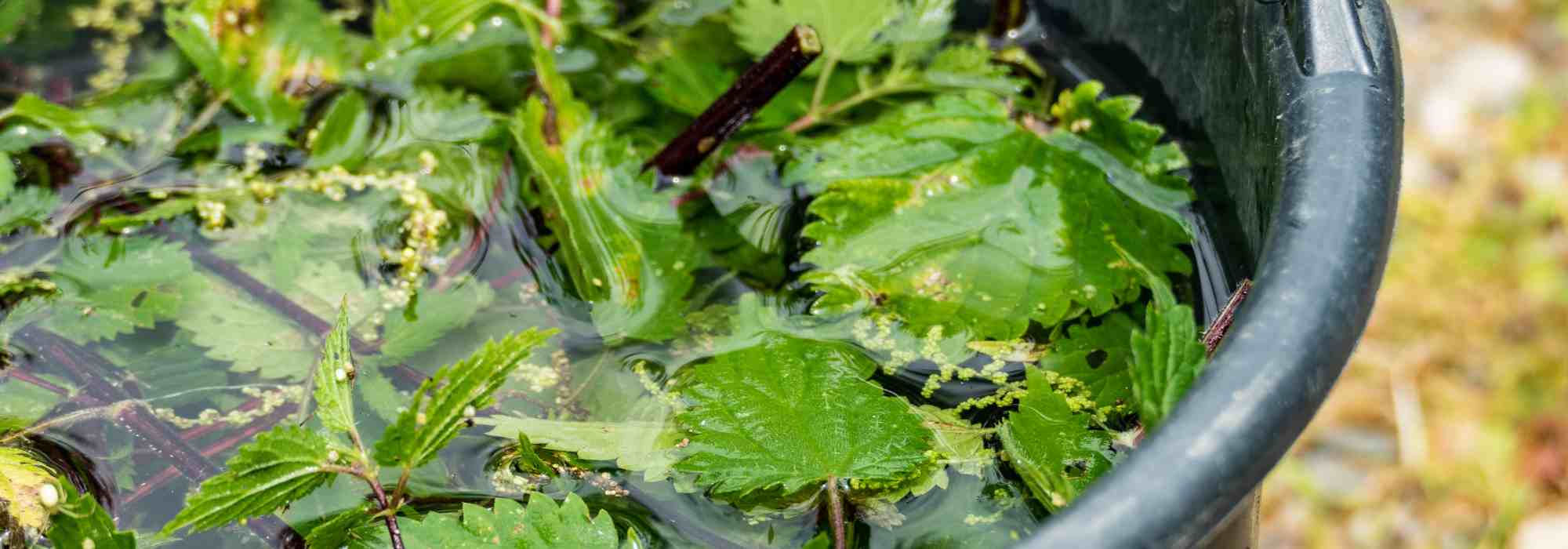
Gardening for beginners: how to feed your plants naturally and easily?
The best alternatives to chemical fertilisers
Contents
Our plants, whether grown in the ground or in pots, often need a little helping hand to grow well. Natural fertilisers, soil amendments, plant teas – we have a whole arsenal at our disposal to help them thrive without resorting to chemical products!
Are you a beginner gardener unsure about how and when to feed your plants? Follow our advice!
The basic rules to know for properly feeding your plants
Before applying any kind of nourishment to ornamental or vegetable plants, let’s recap some basic principles… starting from the very beginning:
- Understand the role of the soil : a living soil, rich in humus, is the primary source of nourishment for plants, long before any fertilisers or plant teas. It’s the soil that needs care even before considering planting.
-
Observe your plants, as pale or yellow foliage, slow growth or sparse flowering are often signs of nutrient deficiency. Young gardeners, be attentive to deficiency symptoms: a deficient plant will show several signs.
-
Tailor your applications to needs: not all plants have the same requirements. A hungry vegetable garden (tomatoes, squashes…) isn’t fed the same way as a perennial border, a rose garden, a scree garden (which doesn’t need feeding) or a container garden (for which it’s important)!
-
Feed at the right time: applications should be made in spring and autumn, during key periods of growth or regeneration. Apply slow-release fertilisers preferably in autumn and fast-acting fertilisers in spring to stimulate vegetation regrowth. Distinguish between fertilisers and soil conditioners: the former act quickly, the latter are long-term treatments. Also favour gradual applications: it’s better to feed regularly in small quantities than to apply everything at once. This avoids excesses, deficiencies and losses through leaching.
- Prioritise natural sources: compost, mulch, organic fertilisers or plant decoctions that nourish effectively without unbalancing the soil or causing pollution. We’ll detail this below.
→ Also read The role of humus in soil fertility and Fertiliser or soil conditioner: what’s the difference? I’ll discuss soil improvement in more detail in How to enrich your soil naturally with organic conditioners?
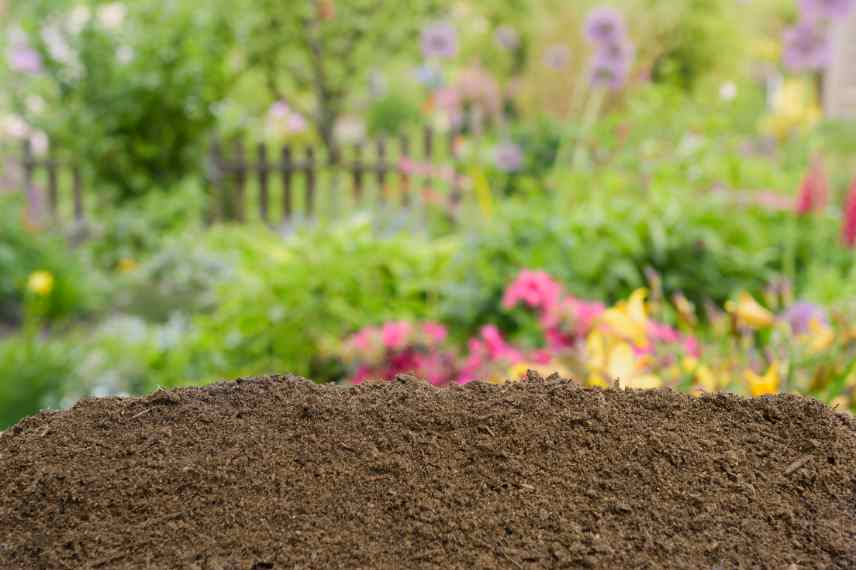
The soil: the vital foundation where everything happens for plant health
Read also
Nourrir le sol naturellementThe nutritional needs of plants
Plants don’t live on love and fresh water alone… While water and light are two essential elements for their survival, what they draw from the soil contributes just as much to their flourishing, as they find the necessary nourishment there for their development. Much like us humans, who derive the energy we need daily from our food. And sometimes, this nourishment runs short or becomes depleted.
In plants, there are three essential macronutrients: nitrogen, phosphorus, and potassium, as well as micronutrients.
- Nitrogen (N): It is essential for the growth of leaves and stems. It promotes the development of lush, green foliage. It can be found in compost, well-rotted manure, green manures like alfalfa or clover, and certain plants—see below. A nitrogen deficiency often results in plants with pale green, weak leaves.
- Phosphorus (P), which plays a crucial role in root development and flowering. It helps plants get off to a strong start and produce flowers and fruits. Natural sources rich in phosphorus include bone meal, compost, and certain types of phosphate rock. A deficiency leads to reduced flower production and increased susceptibility to drought.
- Potassium (K), which strengthens plants’ resistance to diseases and improves flower production and fruit quality. It is present in ramial chipped wood (RCW), wood ash, dried banana peels, and naturally in some plants—see below.
Micronutrients, though required in smaller quantities, are just as crucial. They include elements like calcium, magnesium, iron, and sulphur, which can be supplied through amendments such as crushed eggshells and dolomite. An iron deficiency manifests as yellowing leaves.
Also read our article: NPK: Definition and Uses.
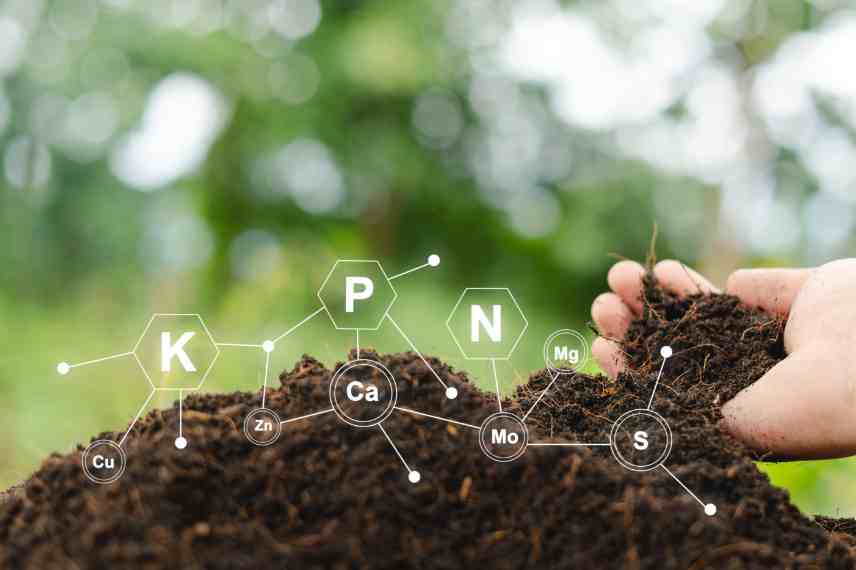
Nutrients naturally present in the soil sometimes run low: it needs correcting
Natural fertilisers within easy reach: compost, eggshells, coffee grounds and plant teas
When we talk about natural fertilisers, in gardening terms we’re referring to organic fertilisers. These come from the decomposition of organic matter like homemade compost, right through to specific fertilisers like crushed horn that you can buy commercially. Some fertilisers enrich the soil directly, like comfrey, while others provide quick benefits and are readily absorbed by plants.
Here are the easiest ones to obtain or make at home:
Compost: The Black Gold
Compost is undoubtedly the most well-known and effective natural fertiliser. Compost improves soil structure and provides a wide range of essential nutrients, including nitrogen, phosphorus, potassium, as well as micronutrients like calcium and magnesium, which are released gradually to nourish plants long-term. It’s an excellent way to recycle kitchen and garden waste into a rich soil amendment. It’s now even obligatory, even in urban areas.
To make compost, alternate layers of green nitrogen-rich materials (kitchen scraps, grass clippings) and brown carbon-rich materials (dead leaves, shredded branches). Turn the pile regularly to aerate and speed up decomposition. Within a few months, you’ll have rich compost ready to use. Learn more in Beginner Gardening: Succeed with Compost in 5 Easy Steps.
Coffee Grounds: A Boost for Your Plants
Coffee grounds are an often underestimated natural fertiliser, sometimes even mocked. Yet coffee grounds are a good source of nitrogen and minerals, easily available at home if you consume loose coffee. Sprinkle them around plants, mix them into the soil when planting, or add them directly to compost. They’re particularly beneficial for acidophilous plants like rhododendrons, camellias and blueberries. Learn more in: Coffee Grounds, a Treasure for Garden Plants: Fact or Fiction?
Eggshells: Don’t Throw Them Away!
Crushed eggshells provide slowly absorbed calcium, essential for plant strength, helping them withstand bad weather and attacks from certain pathogenous organisms. Again, it’s easy to save them for the garden: crush the shells finely before spreading them at the base of plants or adding them to compost.
Banana Peels: Rich in Potassium
Banana peels are a natural source of potassium, an essential nutrient for plant flowering and fruiting. To use banana peels as fertiliser, you can cut them into small pieces and bury them near plant roots. You can also dry them, crush them and mix them into the soil.
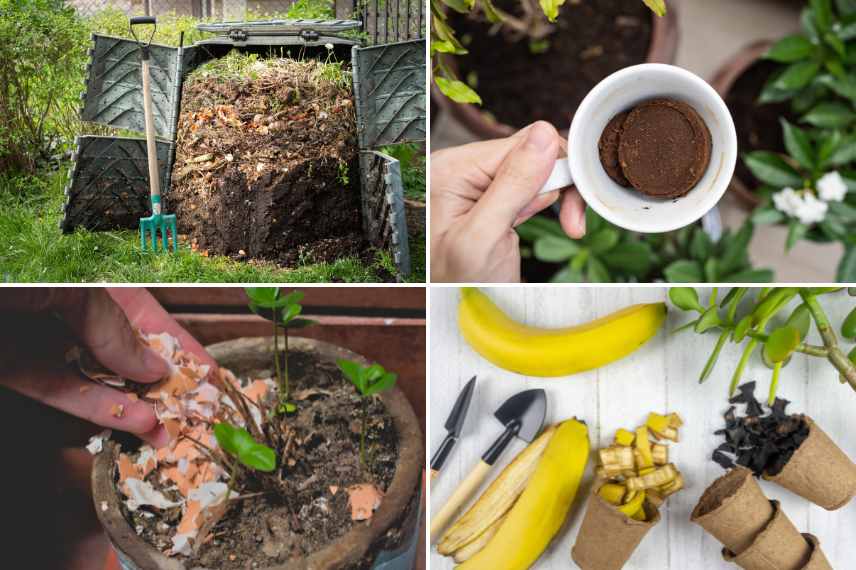
4 natural solutions to feed your plants!
Chicken Manure: A Powerful Fertiliser
Chicken manure is a very rich natural fertiliser in nitrogen, phosphorus and potassium, especially useful if you have a chicken coop. However, it must be used with caution as it can burn plant roots if applied directly. To avoid this, mix chicken manure with compost or let it compost for several months before use. This will give you a balanced, powerful fertiliser for your plants.
Wood ash is also beneficial for your plants as it provides phosphorus, potassium and trace elements. Be careful to dose it correctly (see our advice in What to Do with Wood Ash in the Garden?
Nettle Tea: A Growth Concentrate
Rich in nitrogen, nettle tea is an excellent stimulant for green-leafed plant growth. It’s a liquid fertiliser that’s quite easy to prepare if you have nettles in your garden. Soak 1kg of fresh nettles in 10 litres of water for 1-2 weeks. Strain and dilute to 10% before watering your plants. This tea stimulates young plant growth, enriches the soil and strengthens plants against disease. Our tutorial explains it with images: How to Make Nettle Tea?.
Other Plant Teas
While nettle tea is the most well-known and accessible to everyone, there are many others that are just as natural and effective.
Beyond their often repellent, insecticidal and fungicidal action, here are the ones we particularly recommend for their stimulating and fertilising properties, if you have the raw materials in your garden:
- Comfrey Tea: The star of plant teas! Because it enriches the soil while stimulating plant growth. Rich in potash, calcium, boron, phosphorus and allantoin, this tea is excellent for flowering and fruiting of vegetable-fruit crops (aubergines, tomatoes…), as well as all flowering plants.
- Fern Tea: Rich in minerals, nitrogen, phosphorus, potash, silica and calcium, it’s complete and beneficial for the growth and rooting of all plants.
- Horsetail Tea: Rich in silica, it strengthens plants’ natural defences and benefits flowering plants and fruit trees. Rich in phosphorus, it stimulates root production.
- Cabbage Tea: Rich in nitrogen and trace elements, it fertilises all plants, improving their growth and the soil!
- Tomato Tea: It strengthens plants’ natural defences, ideal for tomatoes, aubergines, cabbages and squashes.
- Tansy Tea: An insect repellent, it protects plants against aphids and other insects, ideal for vegetables and aromatic plants.
- *Dandelion Tea: Stimulates growth and strengthens young plants and vegetables in the kitchen garden. It benefits flowering and fruit production in tomatoes.
- Elder Leaf Tea: Rich in nitrogen, it stimulates plant foliage, and thus leafy vegetables in the kitchen garden.
- Banana Peel Tea: Rich in potassium, it promotes flowering and fruiting of roses and flowering plants, vegetable crops (tomatoes, peppers…). Also useful for potassium deficiency (yellowing or browning and curling of leaf edges). It’s often easier to use fresh peels – see above.
Find all our plant tea and decoction recipes in our dedicated section Plant Teas, Decoctions and Macerations! As well as our articles: Plant Teas in the Garden: When to Use Them? How to Dose and Apply Them?; Stimulant Plants to Use as Teas and Decoctions to Boost Your Crops
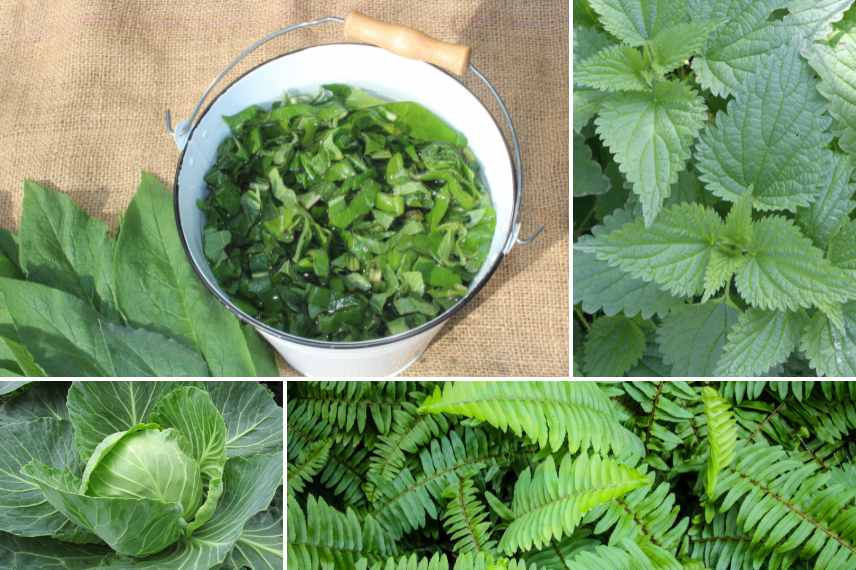
Comfrey, nettle, cabbage and fern teas are the most nutritious for plants
Gardening techniques for rich soil
Beyond providing nourishment through soil amendments or fertilisers, and the technique of green manures to be incorporated into the soil, there are three essential practices not to overlook, as they enhance the booster effect given to plants.
1- Mulching, which involves covering the soil with organic matter such as straw (untreated!), fallen leaves from the garden or compost. It not only protects the soil by retaining moisture, preventing surface crusting and reducing weed growth, but as it decomposes, the mulch enriches the soil with nutrients.
2- Crop rotation: alternating crops from one year to the next helps prevent soil exhaustion and reduces disease risks. For example, after a demanding crop like tomatoes, plant legumes that fix nitrogen in the soil.
3- Companion planting: certain plants complement each other and mutually improve their growth. For instance, carrots and onions repel each other’s pests, while beans enrich the soil with nitrogen, benefiting neighbouring plants. Read Pascale’s advice in Companion Plants in the Vegetable Garden.
- Subscribe!
- Contents



































Comments